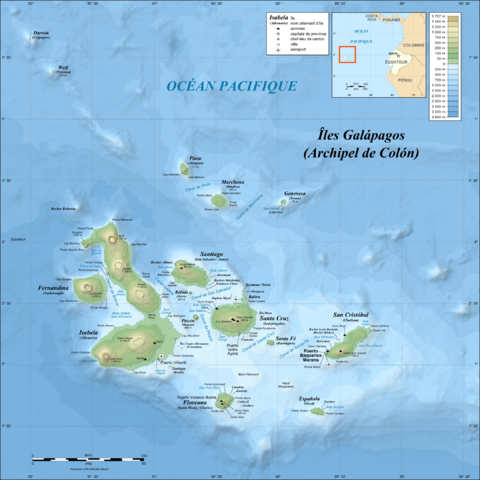 ©2020 Biological and Chemical Oceanography Data Management Office.
©2020 Biological and Chemical Oceanography Data Management Office.Funded by the U.S. National Science Foundation
The question addressed in this project is: Does the 2014-2015 El Niño cause a regime shift in Galapagos subtidal ecosystems? And if so, what thresholds are crossed to drive the change from rocky subtidal communities with abundant corals to a barnacle dominated regime? Regime shifts are non-linear "ecological surprises" in the sense that the endpoint is not predictable as a linear outcome of a driver variable. The working hypothesis for this project is that the forthcoming 2014-2015 El Niño will create non-linear effects that are negative for corals which bleach during extreme temperature variability of the El Niño Southern Oscillation (ENSO), but are positive for the benthic (bottom dwelling) food chain dependent on barnacles for food. The specific work in the Galapagos will contribute to the general understanding of non-linear effects of climate stress in marine ecosystems, which has been highlighted as a critical information gap needed to understand the effects of climate change on ecosystems. The study will also inform best practices for the conservation of corals, which are threatened worldwide by multiple stressors and cumulative direct, and indirect impacts.
Perturbations such as El Niños can drive ecosystems to a tipping point as thresholds are exceeded and a sudden transition to a different state (regime) occurs. Since the frequency of extreme El Niños is projected to increase with climate change, there is a pressing need to develop a more comprehensive understanding of how ENSOs affect marine communities in the context of climate change. Currently, the National Oceanic and Atmospheric Administration (NOAA) Climate Prediction Center predicts a 70-80 % chance of an El Niño occurring during the northern hemisphere summer-winter of 2014-2015. This project leverages an existing quantitative baseline on benthic community structure in the Galapagos subtidal to address 12 predictions about community-ecosystem level impacts of the oncoming 2014-2015 El Niño. The research employs an observational-experimental approach to test the predictions and to discern if additional bleaching stress to corals and further increases in barnacles associated with this ENSO ultimately leads to an ecosystem state (regime) characterized by declining coral populations and increasing barnacles and their predators.
| Dataset | Latest Version Date | Current State |
|---|---|---|
| Measurement site locations from RAPDGALPGS project in the Eastern Tropical Pacific, Galapagos Islands, Ecuador in 2015 and the SPONGERAPDGALPGS project in 2016 and 2017 | 2017-03-03 | Final no updates expected |
| Barnacle percent cover in rocky subtidal habitats of the Galapagos Islands observed in 2015 and 2016 (RAPDGALPGS project) | 2017-02-16 | Preliminary and in progress |
| Subtidal temperature values from RAPDGALPGS project in the Eastern Tropical Pacific, Galapagos Islands, Ecuador in 2015 and 2016 (RAPDGALPGS project) | 2017-02-10 | Preliminary and in progress |

Principal Investigator: Jon D. Witman
Brown University
Contact: Jon D. Witman
Brown University
DMP_OCE-1450214_Witman .pdf (80.25 KB)
10/27/2015